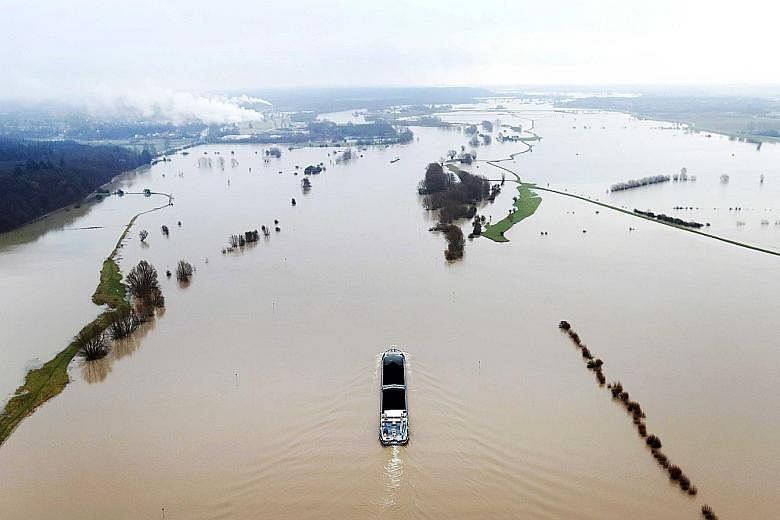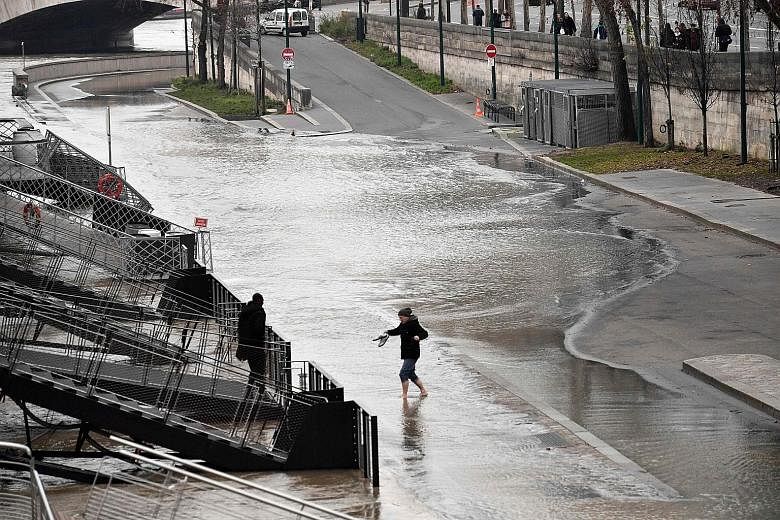ROME • Unless countries urgently boost their flood defences, millions more people will be at risk from river flooding in the next 20 years as global warming increases the likelihood of severe rainfall, scientists have said.
In Asia, the numbers at risk will more than double to 156 million, up from 70 million, with India, China and Indonesia among the worst-affected countries, according to a study by the Potsdam Institute for Climate Impact Research.
The numbers at risk in South America will also double, to 12 million, and Africa will see a rise to 34 million facing flooding threats, up from 25 million, the researchers said on Wednesday.
However, the actual number of people at risk is likely to be higher than the scientists' predictions, as the estimates do not take into account population growth or more people moving to areas at risk of flooding, scientists said.
In a new study published in the journal Science Advances, researchers calculate how much more flood protection is needed to keep the risks of high-end floods constant in the next 25 years. The calculations are based on models 10 times more precise than climate computer simulations.
The US and parts of Europe will need to make major investments in flood protection to prevent a rise in people facing flooding.
"More than half of the US must at least double their protection level within the next two decades if they want to avoid a dramatic increase in river flood risks," said the Potsdam Institute's Mr Sven Willner.
The problem is compounded because flood protection can be a complex issue.
Last year, South Asia suffered its worst monsoon flooding in a decade, which killed more than 1,400, left hundreds of villages submerged and drove tens of thousands of people to relief camps.
Building flood protection will affect food production as "it will increase the risk of particularly high magnitude events", said the Stockholm Environment Institute's Dr Richard Klein.
Regular and often predictable floods also deposit fertile river sediment on fields in Bangladesh, which benefits farmers, he added.
"It's not that straightforward to think if only we built dykes and levees along the rivers... then the world will be a safe place," he said.
Global warming increases the risk of flooding as the amount of rain that can fall during an extreme downpour "increases exponentially" as temperatures rise, said Prof Anders Levermann of the Potsdam Institute.
When more heat-trapping pollutants surround the Earth, more moisture is held in the air, leading to more rainfall.
Global temperatures have already risen by more than 1 deg C above pre-industrial levels, and are expected to continue rising, causing more extreme and unpredictable weather, worsening crop failures, and more migration.
AGENCE FRANCE-PRESSE, THOMSON REUTERS FOUNDATION


